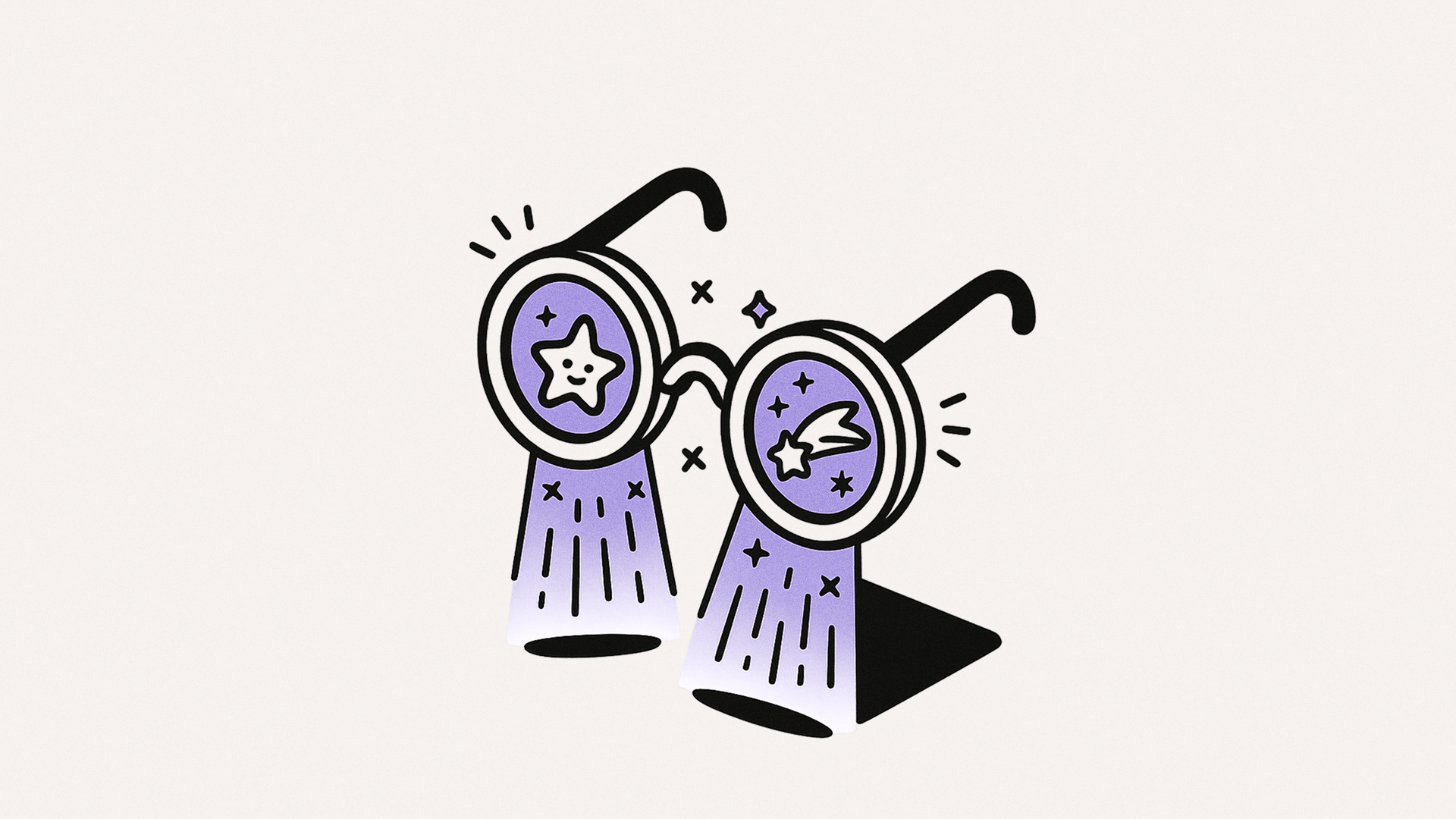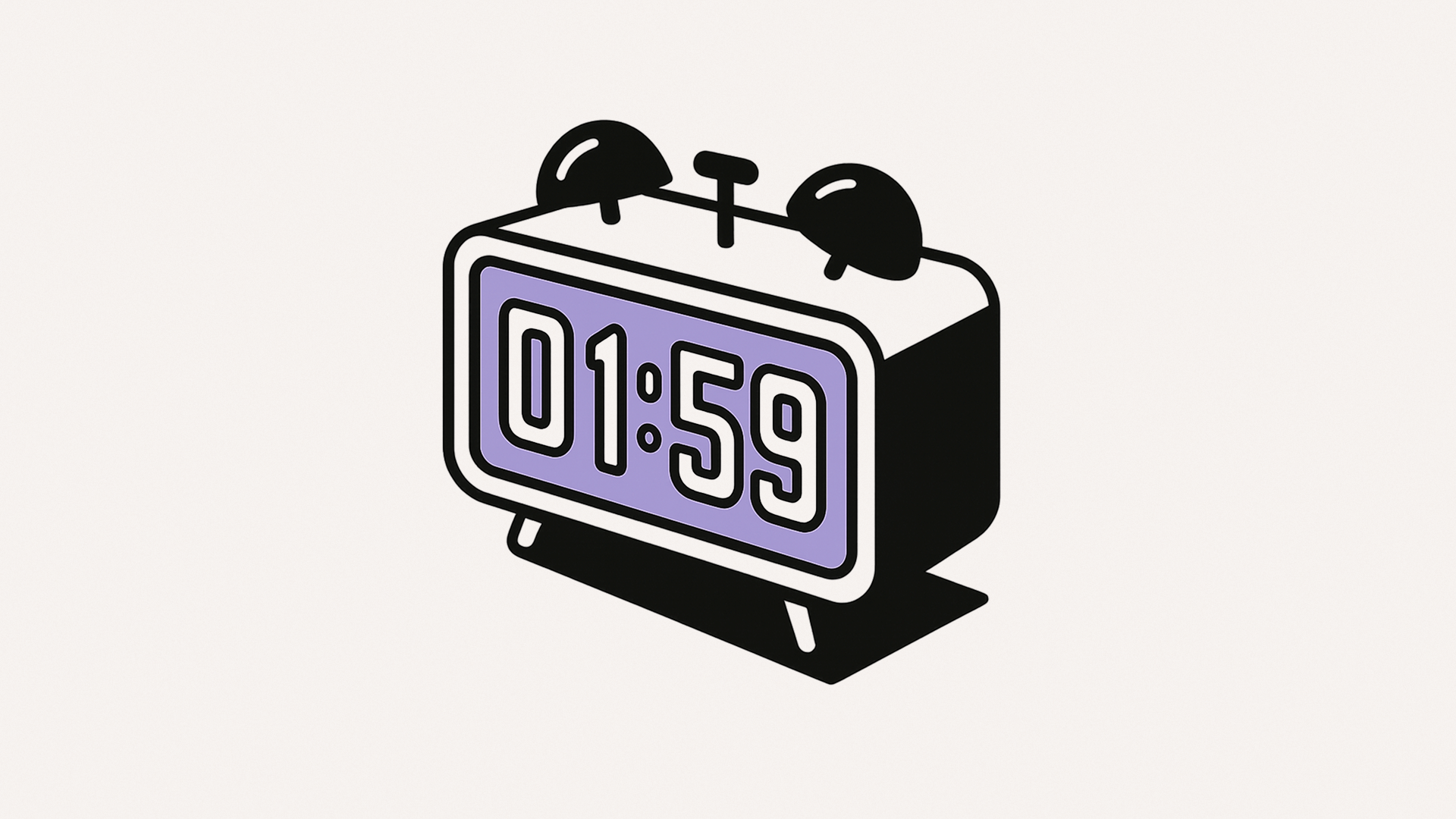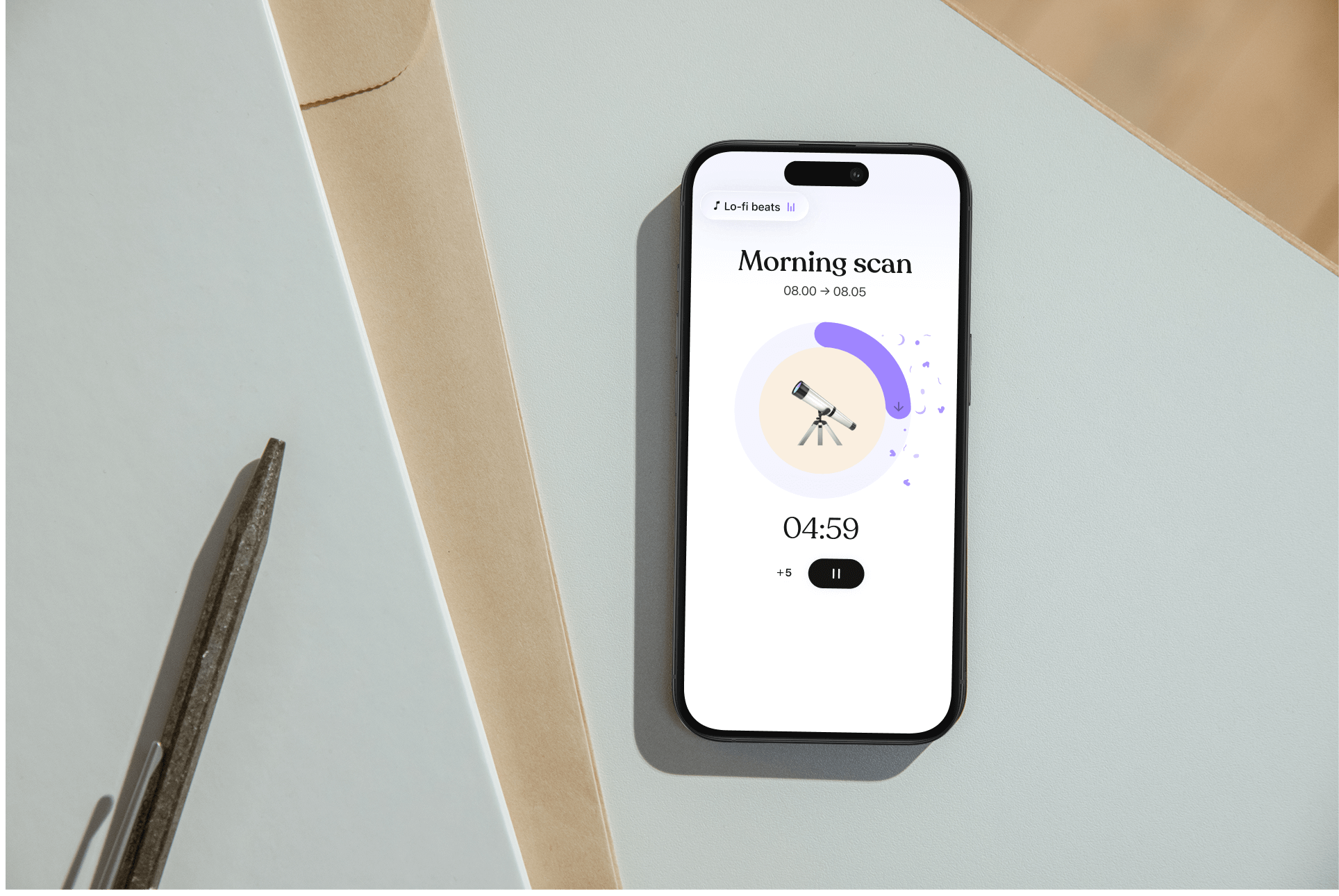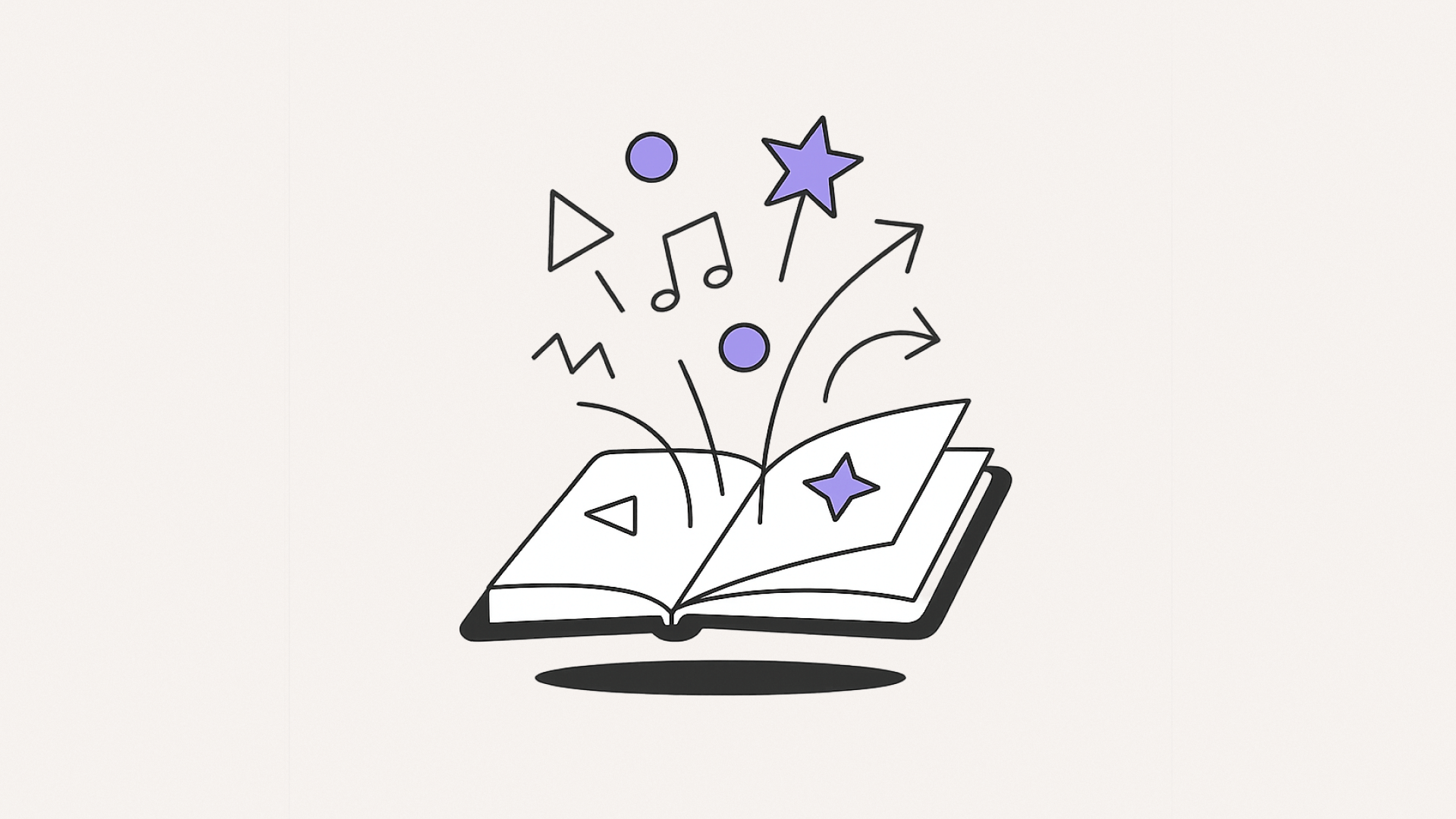3 simple strategies to get a move on
Sometimes you don't have the time or energy to learn new strategies to succeed. That's why we present three simple micro-strategies to help you get things done, when you are feeling overwhelmed and defeated.
Sometimes you don't have the time or energy to learn new strategies to succeed. That's why we present three simple micro-strategies to help you get things done, when you are feeling overwhelmed and defeated.
You are lying in bed. Looking at piles of clothes to fold and yesterday's outfit draped on a chair, because you don't know if it can be reused. The kitchen is a mess and you can't find that book you need to return to the library. From the center of the clutter you feel overwhelmed. Maybe you start blaming yourself for being idle and careless. What’s helpful to know is that you’re not lazy, your brain’s just overloaded. Especially if you’re neurodivergent, productivity can’t rely on “grind harder” advice. You need smaller, kinder systems that work with your brain’s wiring, not against it. Here are three of our favorite techniques that help you make real progress, one small step at a time.
Ever look at a big project and feel instantly frozen? That’s your brain protecting you from overwhelm. Here comes the proverb “How do you eat an elephant? to your rescue. Of course you can’t eat it as a snack in one perfect mouthful. You have to take a bite at a time. Essentially it means that to reach any goal you’ve got to break it down into bite-size pieces and eventually over time you’ll achieve it. The Single Step strategy helps you cut the elephant into small pieces by asking one simple question:
What’s the smallest, easiest action I can take right now?
It works with big life goals and small tasks in you everyday life. So let’s break your task into tiny pieces and add a little gamified sparkle while we’re at it.

So you are still in bed, looking out on the piles surrounding you. Instead of doing what you always do: Telling yourself, that you have to sort everything: Clean clothes from dirty, in colors, by temperature etc. Ask yourself: What’s the smallest, easiest action I can take right now?
So now you managed to collect one pile. What is the next easiest action you can take?
Congratulations, you have now conquered two tasks. Next you have to choose which pile you will give your attention. Then one more time you ask yourself: What’s the smallest, easiest action I can take right now? You can, for example, divide the dirty clothes by colors or maybe degrees?
These single steps and small actions calm your nervous system. Once you take one step, your brain gets a hit of momentum and wants to keep going. The cool-imaginative-clothes-scanning-glasses help you to gamify the process and quiet that self-critical voice.
You can use the Single Step strategy in Tiimo by using the AI Co-planner. Just empty your head and the planner will break down your tasks into simple, actionable steps, adding time estimates that make you feel like a productivity powerhouse. And now when you are on a roll, why not pair the Single Step with a small reward after each step? A stretch, a snack, or a favorite song — to train your brain to associate starting with pleasure, not panic.

Multitasking might make you feel productive, but it’s actually a focus villain. The Single-Task Superhero strategy flips that script: One task, full attention, full dopamine.
Here’s how to use it:
Focusing on one task helps your brain find flow! That sweet spot where time disappears and productivity feels natural.
Tiimo can also help you to be the superhero of single tasks.
Read more about Tiimo's Focus Timer and how to set up Apple's Focus Mode.

Sometimes, the smallest undone tasks drain the most energy — that message you keep meaning to send, that form you’ve been “about to fill out” since Tuesday.
Enter the Two-Minute Taskmaster. The rule: if a task takes two minutes or less, do it immediately. No negotiating. No “I’ll do it later.” Just do it now.
Examples:

Tiny, unfinished tasks clutter your mental bandwidth. Completing them instantly frees your attention for bigger things.
Try turning this into a mini-ritual.

So… what’s your single step going to be today?
Start with one small, easy step, like the Single Step strategy. Breaking tasks down reduces overwhelm and builds steady momentum.
Try the Single-Task Superhero method. Focus on one important task for 45 minutes, then rest. You’ll train your brain to find flow and focus faster.
If something takes less than two minutes, do it immediately. These quick wins keep your to-do list light and your mind clear.
Yes! Tiimo’s AI Co-planner breaks big tasks into manageable chunks and adds time estimates — making it easier to start and stay consistent.
Sometimes you don't have the time or energy to learn new strategies to succeed. That's why we present three simple micro-strategies to help you get things done, when you are feeling overwhelmed and defeated.
You are lying in bed. Looking at piles of clothes to fold and yesterday's outfit draped on a chair, because you don't know if it can be reused. The kitchen is a mess and you can't find that book you need to return to the library. From the center of the clutter you feel overwhelmed. Maybe you start blaming yourself for being idle and careless. What’s helpful to know is that you’re not lazy, your brain’s just overloaded. Especially if you’re neurodivergent, productivity can’t rely on “grind harder” advice. You need smaller, kinder systems that work with your brain’s wiring, not against it. Here are three of our favorite techniques that help you make real progress, one small step at a time.
Ever look at a big project and feel instantly frozen? That’s your brain protecting you from overwhelm. Here comes the proverb “How do you eat an elephant? to your rescue. Of course you can’t eat it as a snack in one perfect mouthful. You have to take a bite at a time. Essentially it means that to reach any goal you’ve got to break it down into bite-size pieces and eventually over time you’ll achieve it. The Single Step strategy helps you cut the elephant into small pieces by asking one simple question:
What’s the smallest, easiest action I can take right now?
It works with big life goals and small tasks in you everyday life. So let’s break your task into tiny pieces and add a little gamified sparkle while we’re at it.

So you are still in bed, looking out on the piles surrounding you. Instead of doing what you always do: Telling yourself, that you have to sort everything: Clean clothes from dirty, in colors, by temperature etc. Ask yourself: What’s the smallest, easiest action I can take right now?
So now you managed to collect one pile. What is the next easiest action you can take?
Congratulations, you have now conquered two tasks. Next you have to choose which pile you will give your attention. Then one more time you ask yourself: What’s the smallest, easiest action I can take right now? You can, for example, divide the dirty clothes by colors or maybe degrees?
These single steps and small actions calm your nervous system. Once you take one step, your brain gets a hit of momentum and wants to keep going. The cool-imaginative-clothes-scanning-glasses help you to gamify the process and quiet that self-critical voice.
You can use the Single Step strategy in Tiimo by using the AI Co-planner. Just empty your head and the planner will break down your tasks into simple, actionable steps, adding time estimates that make you feel like a productivity powerhouse. And now when you are on a roll, why not pair the Single Step with a small reward after each step? A stretch, a snack, or a favorite song — to train your brain to associate starting with pleasure, not panic.

Multitasking might make you feel productive, but it’s actually a focus villain. The Single-Task Superhero strategy flips that script: One task, full attention, full dopamine.
Here’s how to use it:
Focusing on one task helps your brain find flow! That sweet spot where time disappears and productivity feels natural.
Tiimo can also help you to be the superhero of single tasks.
Read more about Tiimo's Focus Timer and how to set up Apple's Focus Mode.

Sometimes, the smallest undone tasks drain the most energy — that message you keep meaning to send, that form you’ve been “about to fill out” since Tuesday.
Enter the Two-Minute Taskmaster. The rule: if a task takes two minutes or less, do it immediately. No negotiating. No “I’ll do it later.” Just do it now.
Examples:

Tiny, unfinished tasks clutter your mental bandwidth. Completing them instantly frees your attention for bigger things.
Try turning this into a mini-ritual.

So… what’s your single step going to be today?
Start with one small, easy step, like the Single Step strategy. Breaking tasks down reduces overwhelm and builds steady momentum.
Try the Single-Task Superhero method. Focus on one important task for 45 minutes, then rest. You’ll train your brain to find flow and focus faster.
If something takes less than two minutes, do it immediately. These quick wins keep your to-do list light and your mind clear.
Yes! Tiimo’s AI Co-planner breaks big tasks into manageable chunks and adds time estimates — making it easier to start and stay consistent.
Sometimes you don't have the time or energy to learn new strategies to succeed. That's why we present three simple micro-strategies to help you get things done, when you are feeling overwhelmed and defeated.
You are lying in bed. Looking at piles of clothes to fold and yesterday's outfit draped on a chair, because you don't know if it can be reused. The kitchen is a mess and you can't find that book you need to return to the library. From the center of the clutter you feel overwhelmed. Maybe you start blaming yourself for being idle and careless. What’s helpful to know is that you’re not lazy, your brain’s just overloaded. Especially if you’re neurodivergent, productivity can’t rely on “grind harder” advice. You need smaller, kinder systems that work with your brain’s wiring, not against it. Here are three of our favorite techniques that help you make real progress, one small step at a time.
Ever look at a big project and feel instantly frozen? That’s your brain protecting you from overwhelm. Here comes the proverb “How do you eat an elephant? to your rescue. Of course you can’t eat it as a snack in one perfect mouthful. You have to take a bite at a time. Essentially it means that to reach any goal you’ve got to break it down into bite-size pieces and eventually over time you’ll achieve it. The Single Step strategy helps you cut the elephant into small pieces by asking one simple question:
What’s the smallest, easiest action I can take right now?
It works with big life goals and small tasks in you everyday life. So let’s break your task into tiny pieces and add a little gamified sparkle while we’re at it.

So you are still in bed, looking out on the piles surrounding you. Instead of doing what you always do: Telling yourself, that you have to sort everything: Clean clothes from dirty, in colors, by temperature etc. Ask yourself: What’s the smallest, easiest action I can take right now?
So now you managed to collect one pile. What is the next easiest action you can take?
Congratulations, you have now conquered two tasks. Next you have to choose which pile you will give your attention. Then one more time you ask yourself: What’s the smallest, easiest action I can take right now? You can, for example, divide the dirty clothes by colors or maybe degrees?
These single steps and small actions calm your nervous system. Once you take one step, your brain gets a hit of momentum and wants to keep going. The cool-imaginative-clothes-scanning-glasses help you to gamify the process and quiet that self-critical voice.
You can use the Single Step strategy in Tiimo by using the AI Co-planner. Just empty your head and the planner will break down your tasks into simple, actionable steps, adding time estimates that make you feel like a productivity powerhouse. And now when you are on a roll, why not pair the Single Step with a small reward after each step? A stretch, a snack, or a favorite song — to train your brain to associate starting with pleasure, not panic.

Multitasking might make you feel productive, but it’s actually a focus villain. The Single-Task Superhero strategy flips that script: One task, full attention, full dopamine.
Here’s how to use it:
Focusing on one task helps your brain find flow! That sweet spot where time disappears and productivity feels natural.
Tiimo can also help you to be the superhero of single tasks.
Read more about Tiimo's Focus Timer and how to set up Apple's Focus Mode.

Sometimes, the smallest undone tasks drain the most energy — that message you keep meaning to send, that form you’ve been “about to fill out” since Tuesday.
Enter the Two-Minute Taskmaster. The rule: if a task takes two minutes or less, do it immediately. No negotiating. No “I’ll do it later.” Just do it now.
Examples:

Tiny, unfinished tasks clutter your mental bandwidth. Completing them instantly frees your attention for bigger things.
Try turning this into a mini-ritual.

So… what’s your single step going to be today?
Start with one small, easy step, like the Single Step strategy. Breaking tasks down reduces overwhelm and builds steady momentum.
Try the Single-Task Superhero method. Focus on one important task for 45 minutes, then rest. You’ll train your brain to find flow and focus faster.
If something takes less than two minutes, do it immediately. These quick wins keep your to-do list light and your mind clear.
Yes! Tiimo’s AI Co-planner breaks big tasks into manageable chunks and adds time estimates — making it easier to start and stay consistent.


Being productive isn’t always about doing more. It’s about managing your energy. This article explains why a short, daily check-in with your brain’s battery matters. Like your phone needs to be charged, your brain needs it too.
.png)
Tiimo has been selected as a finalist for the iPhone App of the Year at the 2025 App Store Awards, a recognition offered to only a handful of apps each year. This post looks back at the learnings that have shaped the last decade of our journey.

Living with both ADHD and Autism can feel like a creative tug of war. This piece explores how to turn hyperfocus, distraction, and rest into allies for your creativity.